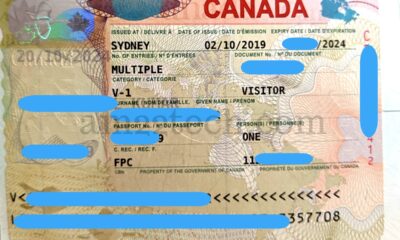Oppotunities
Canada announces immigration levels targets for 2024-2026

Canada’s immigration levels are set to remain consistent with current targets. For the year 2024, the nation aims to admit 485,000 new immigrants. Subsequently, in both 2025 and 2026, Canada plans to welcome 500,000 new immigrants annually.
These targets align with the previously announced Immigration Levels Plan 2023-2025. Newly disclosed information includes the 2026 target and updates to immigrant levels for each class and program between 2024 and 2026.
Here’s a breakdown of immigration targets by class:
-
Economic Class: In 2024, Canada aims to admit approximately 281,135 immigrants, constituting 58% of the annual target. By 2026, this figure is expected to rise to 301,250 immigrants, or 60% of the annual target.
-
Family Class: The target for 2024 is 114,000 immigrants, comprising 24% of all admissions. This will increase to 118,000 immigrants by 2026, maintaining the 24% share.
-
Humanitarian Admissions: The target is set at 89,865 immigrants in 2024, constituting about 19% of all admissions. By 2026, the goal is 80,832 immigrants, or 16% of admissions.
Express Entry and Provincial Nominee Program (PNP) targets will experience an upward trajectory:
-
Express Entry: The target is 110,700 permanent resident admissions in 2024, rising to 117,500 immigrants in both 2025 and 2026.
-
PNP: The target for 2024 is 110,000 immigrants, increasing to 120,000 in 2025 and 2026.
Additionally, Spousal, Partner, and Children sponsorship aims for 82,000 admissions in 2024, reaching 84,000 in both 2025 and 2026. The Parents and Grandparents Program (PGP) targets 32,000 immigrants in 2024, followed by 34,000 immigrants in each of 2025 and 2026.
The Canadian government justifies maintaining unchanged targets, emphasizing the plan’s alignment with economic growth and addressing challenges in housing, healthcare, and infrastructure. From 2026 onwards, the government plans to stabilize permanent resident levels at 500,000, allowing for integration and supporting the labor market. The government also intends to recalibrate temporary resident admissions for sustainability.
The Immigration Levels Plan, mandated by the Immigration and Refugees Protection Act (IRPA), guides the admission of new permanent residents over the next three years in the economic, family, and humanitarian classes.
The announcement follows Canada’s record-breaking immigration in 2022 (437,000 admissions) and the 2023 target of 465,000 permanent resident admissions. A new strategy, “An Immigration System for Canada’s Future,” focuses on creating a welcoming experience, aligning with labor market needs, and developing a coordinated growth plan.
Canada’s immigration strategy has evolved since the late 1980s, responding to labor shortages and economic shifts. Despite public concerns about affordability and housing shortages, the government maintains high immigration targets to address the labor force gap and demographic challenges.
In July 2023, Canada faced 701,300 job vacancies, prompting adjustments to immigration programs like Express Entry. The government’s commitment to high immigration levels is grounded in the recognition that newcomers contribute significantly to population growth and the labor force.
Notably, Quebec, with its unique status, also announced its immigration plan for 2024 and 2025, aiming to welcome 50,000 new immigrants in each year to preserve its distinct francophone character.























